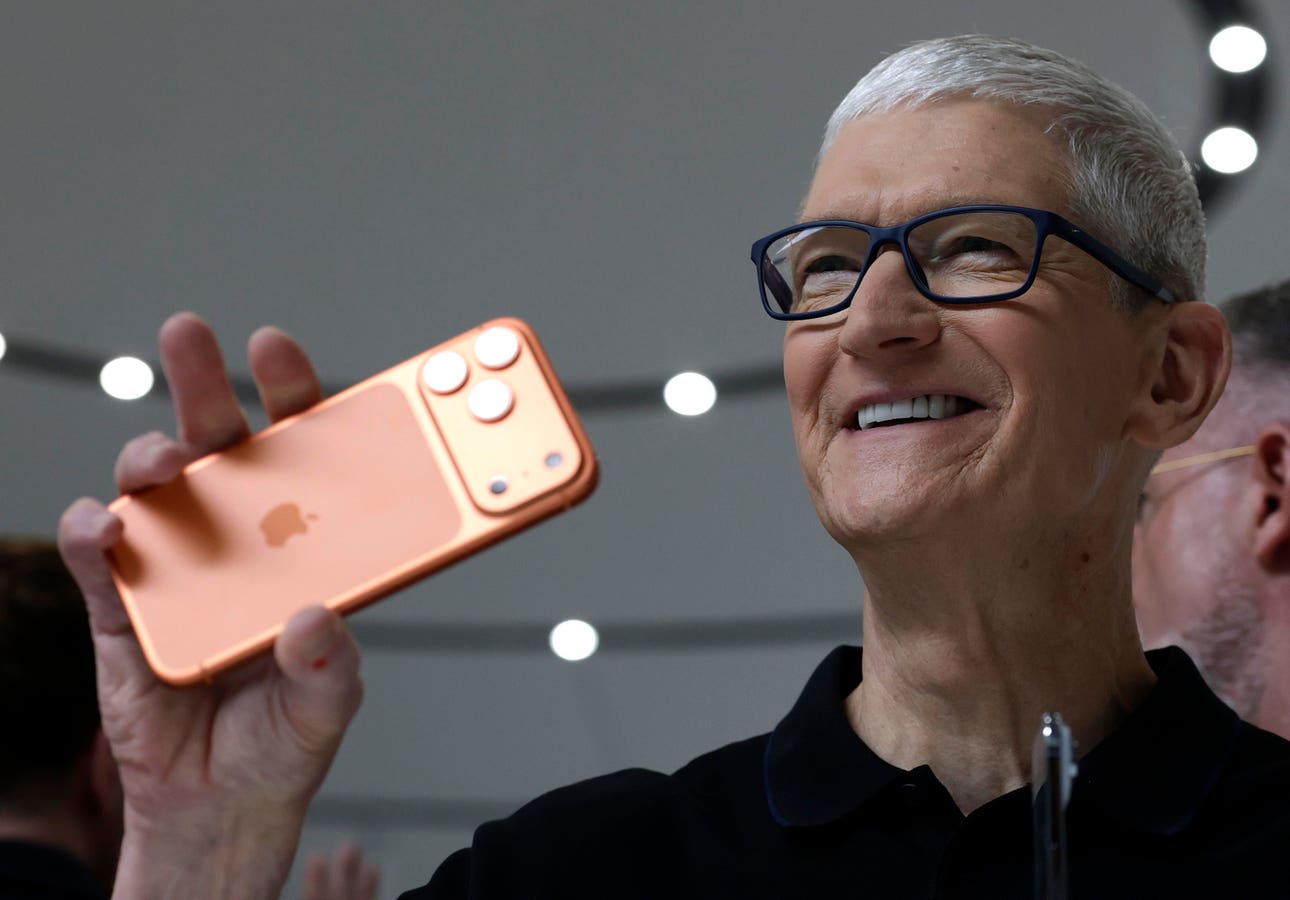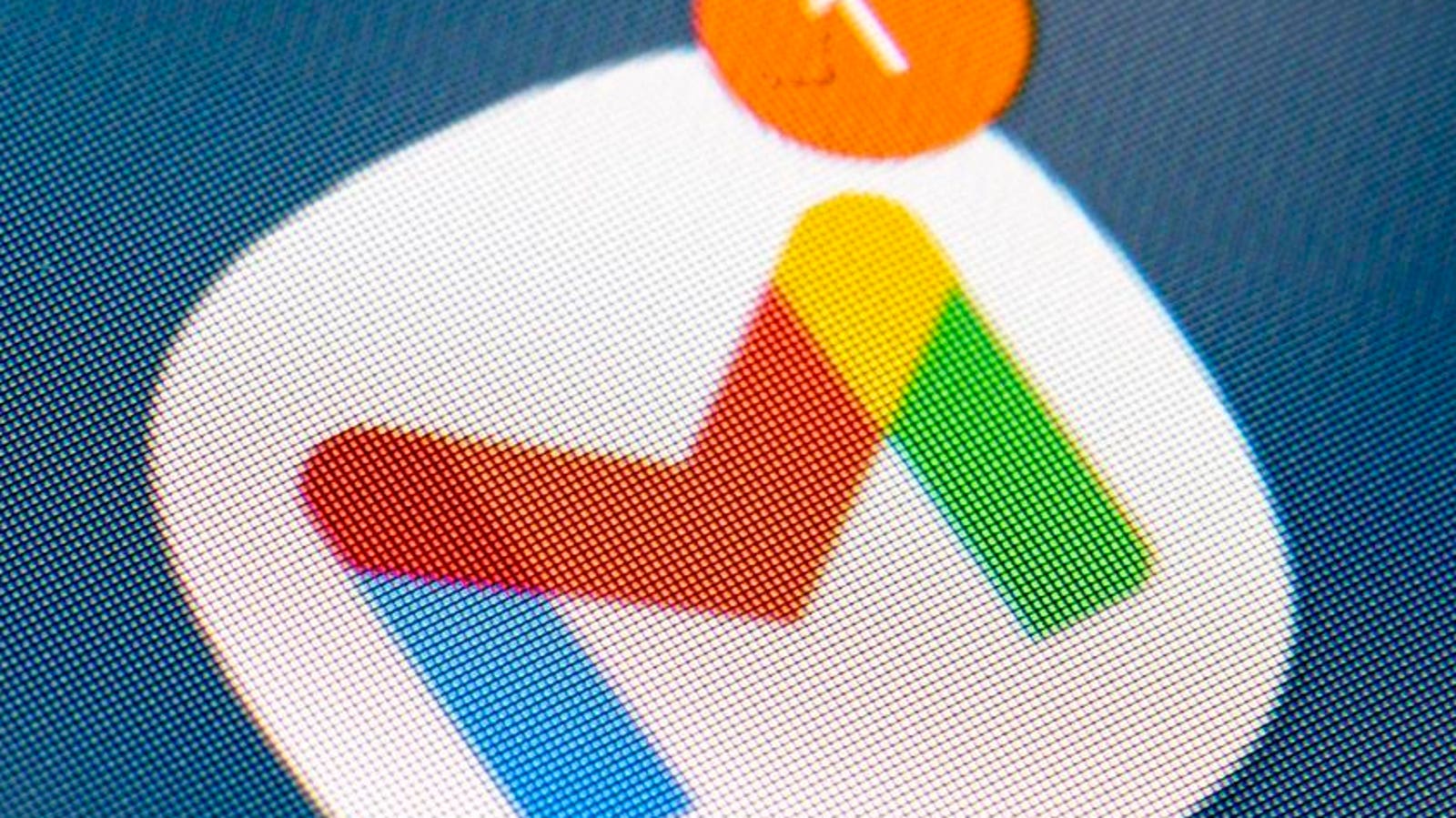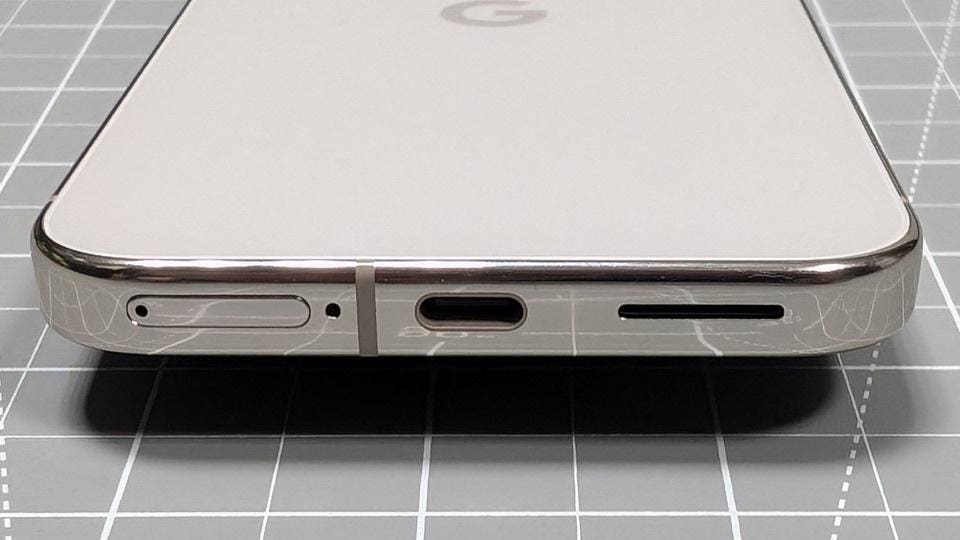CUPERTINO, CALIFORNIA – SEPTEMBER 09: Apple CEO Tim Cook holds up a new iPhone 17 Pro during an Apple special event at Apple headquarters on September 09, 2025 in Cupertino, California. Apple unveiled a new generation of iPhones and updated Apple Watches and AirPods during a special event at Apple headquarters. (Photo by Justin Sullivan/Getty Images)
Getty Images
Taking a look back at this week’s news and headlines from across the Apple world, including a new display for the next iPhone, the best cases for the iPhone 17 Pro, Apple removing every button, OLED for your next Mac and iPad, measuring the M5 performance, Apple’s market cap record and Apple still losing in court.
Apple Loop is here to remind you of a few of the many discussions around Apple in the last seven days. You can also read my weekly digest of Android news here on Forbes.
A New Display And An Old Friend For The iPhone 17e
The iPhone 16e features a notched screen to accommodate the selfie camera and forward-facing sensors, rather than the punched-out oblong used in the iPhone 16 and iPhone 16 Pro handsets. With iOS working around these sensors with black displays and information, it presents a kind of ever-changing status display which Apple brands the “dynamic island.”
Hartley Charton reports that the iPhone 17e, the lower-specced member of the iPhone 17 family, which will launch in late Q1 2026, will introduce the dynamic island at this price point for the first time:
“The leaker added that despite the presence of the Dynamic Island, the iPhone 17e will retain a 60Hz OLED display. This would mean the device essentially shares the same panel as the 6.1-inch iPhone 15 and iPhone 16, which seems believable as Apple’s entry-level devices largely reuse slightly older technology from other products.”
Protecting Your New Phone
For all the talk of strengthened chassis, new colours, and impact protection, the humble smartphone case is still seen as an automatic purchase by many. A new iPhone is likely to be a significant investment, with costs potentially reaching up to $2,000. Of course, there’s going to be a demand to protect something that costs that much.
Forbes contributor David Phelan has taken a closer look at a wide range of cases for the new iPhone 17 and iPhone 17 Pro phones. From tiny slip cases with modern leather, to folio cases with all-around protection (plus Apple’s own cases), there’s bound to be an iPhone 17 case in here that suits your needs.
No Buttons, All Action, For The Anniversary iPhone
The pressure is building on Apple’s 20th Anniversary iPhone. Due for release in 2027, it is expected to deliver a radical update to Apple’s vision of a smartphone, with the long-lusted-for “it’s just a sheet of glass” hype continuing to build.
New details focus on Apple’s plans regarding the buttons, specifically the removal of the iPhone’s physical buttons and the use of solid-state haptics to replicate the experience.
“The current design reportedly integrates buttons directly into the device frame with zero physical movement when pressed. But Apple wants these haptic buttons to feel like real buttons, not like pressing on a ridged piece of metal. Instant Digital speculates that Apple may adopt a vibration-based sound system that uses the back panel or frame to produce audio, combined with an AI-based sound compensation algorithm.
Also set to arrive in 2027’s iPhone is a new camera sensor. Built around the Lateral Overflow Integration Capacitor technology, it should offer a sensor that can handle bright highlights and dark shadows in a single image. That, in turn, should bring natural-looking photographs closer to what the photographer can see.
A New Look To Look At
Bloomberg’s Mark Gurman reports on Apple’s new display technology It is looking to roll out over the upcoming MacBook Air, iPad Air and iPad Mini hardware.
The key change is the long-awaited move to OLED technology. This should offer more vibrant colors and deeper blacks over the existing LCD-based technology, as well as an associated power saving to increase the devices’ endurance.
The iPad Mini should be the first to receive the upgrade with a new model expected in the first quarter of 2026, with the MacBook Air and iPad Air potentially arriving in the second quarter.
Measuring The M5
How powerful is the new M5 Apple Silicon? Now that it has debuted in the MacBook Pro M5 and iPad Pro M5, it’s possible to draw direct comparisons with production hardware. LowEndMac’s Mark Sokolovsky has worked through the benchmarking of the M5 and its predecessors, going back to the M1 architecture. What was considered high-end workstation level in the M1 Ultra is now available off the shelf in the entry-level M5:
“The multicore performance in the M5 rivals the M1 ultra, single core performance is roughly double that of the M1 – imagine what this means for entry level Macs in the future, such as the Mac mini or iMac? Gaming performance already looks quite promising, and according to benchmarks done elsewhere, it appears the M5 chip trades blows with the M1 Pro.”
The Trillionaires
Apple has joined both Microsoft and Nvidia in breaking the $4 trillion market capitalisation mark. Tim Cook’s Apple was the first to pass the $3 trillion mark in 2022, but since then, the voracious demand for AI-enabling silicon has seen Nvidia push ahead to become “the world’s number one company.”
Behind the leading three, you have to drop back to ‘just’ $3.25 trillion for Alphabet, $2.42 trillion for Amazon, and $.19 trillion for Meta.
And Finally…
Following last week’s loss in the United Kingdom’s High Court regarding unfair commissions charged to app developers, long-time Apple watcher John Gruber highlights the number of losses Apple has faced in multiple jurisdictions around the world, before calling out Apple’s haughty attitude every time it takes the stand:
“Apple has approached all this regulatory conflict from a perspective that they’re right, and the regulators are wrong. That the App Store, as Apple wants it, is (a) good for users, (b) fair to developers, and (c) competitive, not anti-competitive, legally. But even if Apple is correct about that, at some point, after being handed loss after loss in rulings from courts and regulatory bodies around the globe, shouldn’t they change their strategy and start trying to offer their own concessions, rather than wait for bureaucrat-designed concessions to be forced upon them?”
Apple Loop brings you seven days worth of highlights every weekend here on Forbes. Don’t forget to follow me so you don’t miss any coverage in the future. Last week’s Apple Loop can be read here, or this week’s edition of Loop’s sister column, Android Circuit, is also available on Forbes.









